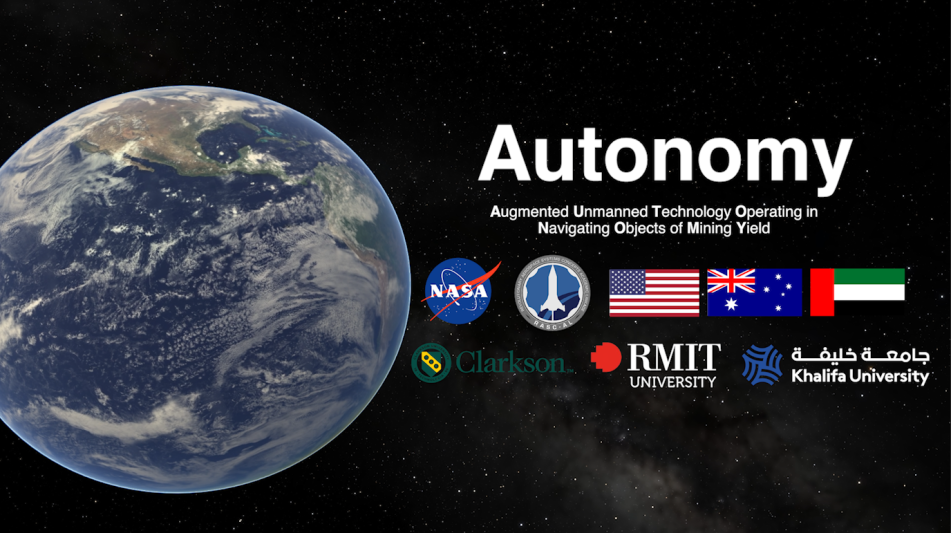Clarkson Team Selected By NASA to Compete in 2024 RASC-AL Competition
Clarkson’s team for the NASA Revolutionary Aerospace Systems Concepts – Academic Linkage (NASA RASC-AL) competition has been selected as finalists to compete in one of NASA’s longest-running student challenges. The Clarkson team, which includes two international partner universities: Khalifa University and the Royal Melbourne Institute of Technology, competed in the theme: AI-Powered Self-Replicating Probes - An Evolutionary Approach. Their project was called: AUTONOMY: Augmented Unmanned Technology Operating in Navigating Objects of Mining Yield.

The competition fuels innovation and challenges undergraduate and graduate teams to develop new concepts to improve our ability to operate on the Moon, Mars, and beyond. Finalists will travel to Cocoa Beach, Florida, this June to present their proposed concepts to a panel of NASA and aerospace industry leaders.
Their solution was one of four finalists for their theme (there are usually upwards of 150 submissions):
- Clarkson with Khalifa and RMIT
- Stanford with the University of Waterloo
- University of Texas, Austin
- Virginia Polytechnic Institute and State University
The Clarkson team, led by Israel Akande, consists of members Lauren Kneer, Junior Tchapdieu, and Patrick Burke. The team is advised by a group of distinguished professors, including Dr. Michael Bazzocchi, Dr. Goodarz Ahmadi, and Prof. Ron Buckingham from Clarkson University, Dr. Roberto Sabatini and Dr. Alessandro Gardi from Khalifa University, and Dr. Anna Bourmistrova from RMIT University.
For the 2024 competition, teams were asked to submit a two-minute video and detailed seven-to-nine-page proposal addressing one of four themes related to leveraging innovation to improve our ability to operate on the Moon, Mars, and beyond. The themes included Long-Duration Mars Simulation at the Moon, Sustained Lunar Evolution, AI-Powered Self-Replicating Probes - an Evolutionary Approach, and Large-Scale Lunar Crater Prospector. A steering committee of NASA personnel and industry experts selected the finalists based on a review of competitive proposals.
This year, each finalist team receives a $6,500 stipend to further develop and present their concept at the RASC-AL Forum in Cocoa Beach, where they will present their findings to a judging panel of NASA and industry experts. The teams with the top two winning papers will be invited to present their design projects to industry experts at AIAA’s 2024 ASCEND Conference.
RASC-AL projects allow university students to incorporate their coursework into space exploration objectives in a team environment and help bridge strategic knowledge gaps associated with NASA’s vision. The competition emphasizes the importance of multidisciplinary teams.
Click here for a video that showcases their concept: https://youtu.be/ZHFbkW08BFU?feature=shared
To view more about the other projects, you can go to the competition website at https://rascal.nianet.org/.
